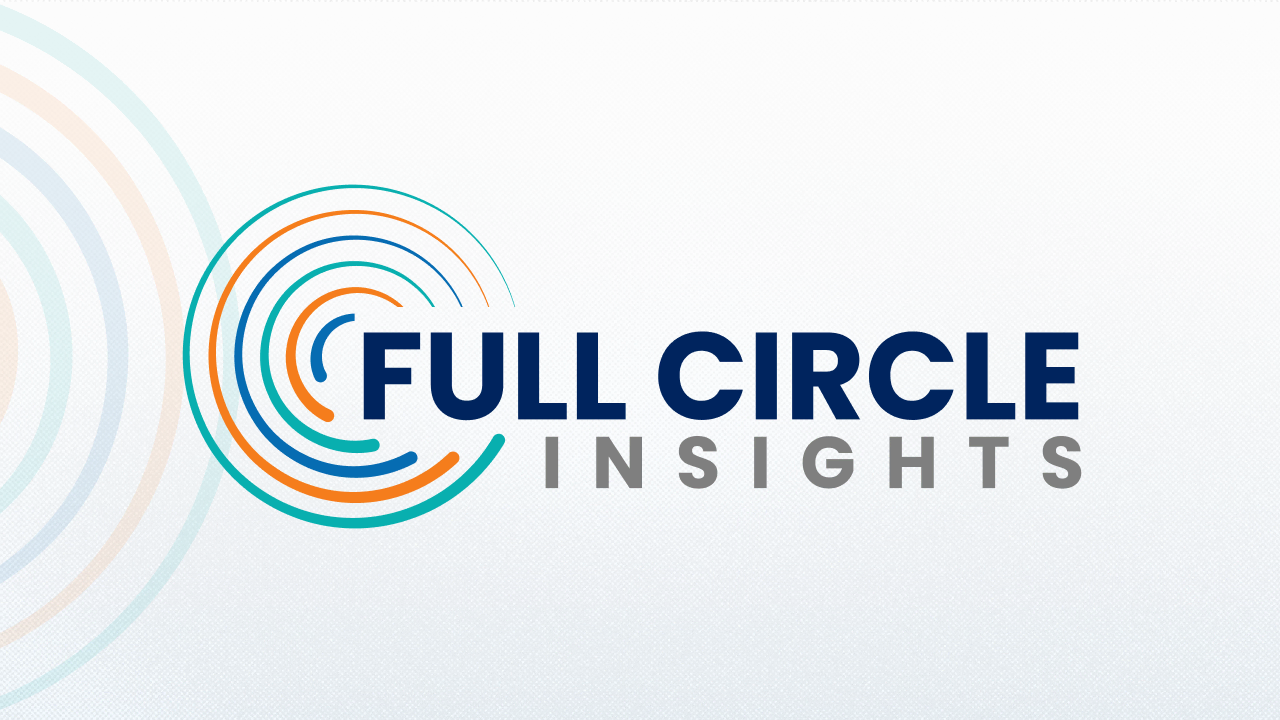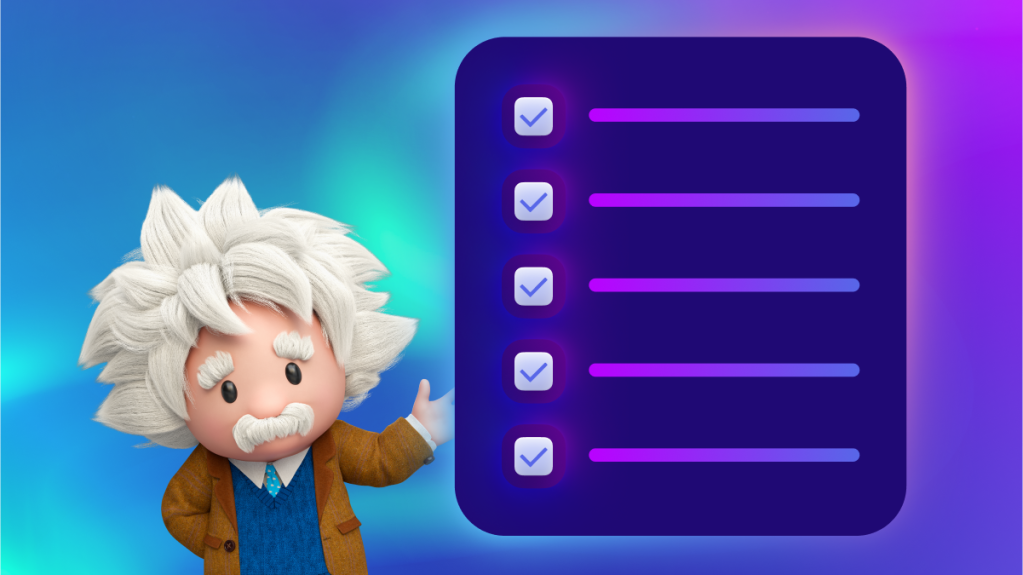AI in Salesforce: What Marketers Can Actually Use Today


AI in Salesforce is no longer theoretical. It’s here, integrated into everyday tools, and ready to support smarter marketing if you know where to look and what to trust.
For marketers, the challenge in 2025 is figuring out what’s usable now, what drives real results, and how to avoid wasting time on features that overpromise and underdeliver. There’s no shortage of AI-powered features floating through Salesforce, but most teams still struggle to operationalize them in a way that moves pipeline.
This is where structure matters. And it’s where platforms like Full Circle Insights and Conquer prove their worth. They don’t just offer AI capabilities. They provide the system and process needed to make AI in Salesforce usable, actionable, and trusted across marketing and sales.
The Promise vs. Reality of AI in Salesforce
Salesforce has positioned Einstein as its flagship AI engine. It powers everything from lead scores to pipeline forecasts to next-best action suggestions. But most marketing teams find themselves underwhelmed with the results.
That’s not a tech issue. It’s a data issue. Einstein works best when it has consistent historical data, clean fields, and standardized workflows to analyze. Unfortunately, most CRMs aren’t maintained with that level of discipline.
If campaign data is messy, campaign types aren’t structured, or sales activity isn’t logged consistently, Einstein’s predictions are built on shaky ground.
That’s why so many teams give up on predictive tools after the first few months. The model might be technically sound, but it’s drawing from an untrustworthy foundation. Without the right campaign infrastructure, it becomes noise.
Platforms like Full Circle Insights fill that gap. They enforce campaign governance and attribution hygiene, ensuring that campaign data, statuses, member interactions, and funnel stages are tracked properly. That creates the kind of CRM environment where AI can thrive and deliver insights worth acting on.
Predictive Lead Scoring: Useful, But Often Ignored
Predictive lead scoring is one of the most visible hallmarks of AI in Salesforce. It sounds simple: analyze your past closed-won deals and automatically score new leads based on similar traits.
In theory, this helps SDRs prioritize high-quality leads. In practice, many teams see scores sitting idle on records while reps keep working lists the old-fashioned way.
The real problem isn’t the score but the lack of workflow integration. If AI assigns a lead a score of 89, but nothing in your sales process changes, the insight is wasted. This is where Conquer becomes critical.
When Conquer is layered into Salesforce, lead scores are immediately operationalized. Reps see prioritized call lists. High-scoring leads are automatically routed to the right person or added to the next outreach sequence. The result is a system where predictive scoring doesn’t just sit there but drives real action.

Generative Content: Early Promise, Limited Precision
Salesforce has rolled out generative tools for marketers, including email copy suggestions and landing page content helpers. These features are easy to test and sometimes helpful for ideation. But they aren’t plug-and-play solutions.
Generative AI in Salesforce still struggles with nuance. It doesn’t understand your brand voice, your ICP’s pain points, or the subtle messages that separate a high-performing campaign from a forgettable one. As a brainstorming aid, it’s useful. As a replacement for strategic content development, it’s not there yet.
The more powerful application is when generative tools are paired with real performance data. If you know which subject lines perform best for a given persona, or which CTAs drive conversions, then generative tools become much more effective.
Attribution Intelligence: The AI That Marketers Actually Use
If there’s one area where AI in Salesforce already delivers clear value to marketers, it’s attribution. Historically, attribution was handled with rigid models like first touch or even split logic. These were simple, but they didn’t reflect the complexity of the modern buyer’s journey.
Now, attribution systems are powered by AI that learns from real engagement patterns. Instead of relying on static rules, AI can analyze sequences of touches, the timing between interactions, and the actual influence of campaigns on deal progression.
Full Circle Insights brings this advanced attribution capability directly into Salesforce. It not only shows you which campaigns are involved in closed-won deals but also highlights the patterns that lead to conversion. It becomes possible to distinguish between high-volume campaigns that don’t convert and lower-volume efforts that consistently influence revenue.
This clarity allows marketing leaders to defend spend, adjust priorities, and forecast with more confidence.
Sales Activation: Where AI Fails Without Execution
Many of Salesforce’s AI features are passive. They provide scores, forecasts, or suggestions, but they don’t trigger action. That’s a problem. Insight without execution is useless.
Conquer plays a transformative role here. Because it is natively embedded in Salesforce, it turns AI insights into frontline action. If a contact attends a high-intent campaign, Conquer can prompt a rep to call within minutes. It doesn’t wait for someone to manually review a dashboard or refresh a report, and that immediacy matters.
In B2B sales, timing often dictates success. AI can spot the signal, but tools like Conquer ensure the signal leads to motion. Combined with Full Circle’s clean campaign data and attribution structure, it creates a full loop: smart insights in, smart actions out.
Forecasting: Bringing Marketing into the Revenue Conversation
Einstein Forecasting is widely used by sales teams to predict deal movement and quota attainment. But marketers often sit on the sidelines of these forecasts. That’s a missed opportunity.
Forecasts are built on top-of-funnel activity. If marketing is driving more engaged leads, warming up dormant accounts, or accelerating deal stages through nurture, that data should be part of the forecasting model.
With Full Circle Insights, marketing’s influence on opportunity progression becomes visible. It’s easier to show how campaign efforts are shortening sales cycles or increasing win rates. And with Conquer feeding sales engagement data into the opportunity record, sales leaders can see which campaigns lead to real conversations, not just clicks.
That shared visibility brings marketing and sales into tighter alignment around pipeline and revenue targets, something most teams are still struggling to achieve.
Final Thoughts
AI in Salesforce isn’t a magic button. It’s a toolset. Used well, it helps marketers move faster, make smarter decisions, and connect more effectively with sales. But it only works when your systems are ready to support it.
That means campaigns need to be structured. Attribution needs to be accurate. Sales workflows need to be responsive. And every insight needs a corresponding action.
Conquer and Full Circle Insights help build that foundation. They don’t replace your team, they make your data, your actions, and your strategy stronger. Want to see the difference? Schedule a demo now!